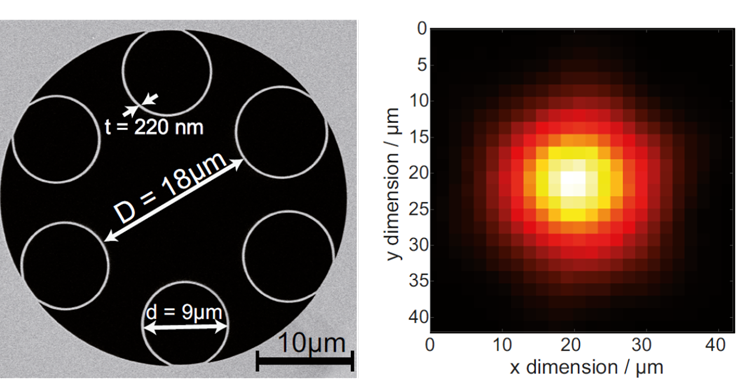UV-guiding hollow-core fibres
Standard optical fibers are most efficient for transmitting light in the near-infrared, at a wavelength λ of approximately 1.5 µm. However, in many situations, there is a need to transmit light at wavelengths where the glass either strongly absorbs (λ > 2 µm) or the glass degrades after just a few hours of exposure, causing transmission to decrease to practically zero (λ < 0.3 µm). This challenge has impeded research in fields that e.g. use ion traps for quantum computing, as many relevant ions require excitation in the ultraviolet (UV) range.
An alternative approach is to use hollow-core fibers, where the transmitted light has an extremely low (<0.1%) overlap with the glass, preventing glass damage. In a collaboration with the University of Ulm, we demonstrated low loss (0.13 dB/m) at 300 nm, an excellent single-mode profile (M2 = 1.03), and 60 mW CW transmission without any damage in a hollow-core fiber.
D. Dorer, M. H. Frosz, S. Haze, M. Deiß, W. Schoch and J. H. Denschlag, "Hollow-core Fiber for Single-mode, Low Loss Transmission of Broadband UV Light," in IEEE Journal of Selected Topics in Quantum Electronics, doi: 10.1109/JSTQE.2023.3299158.






